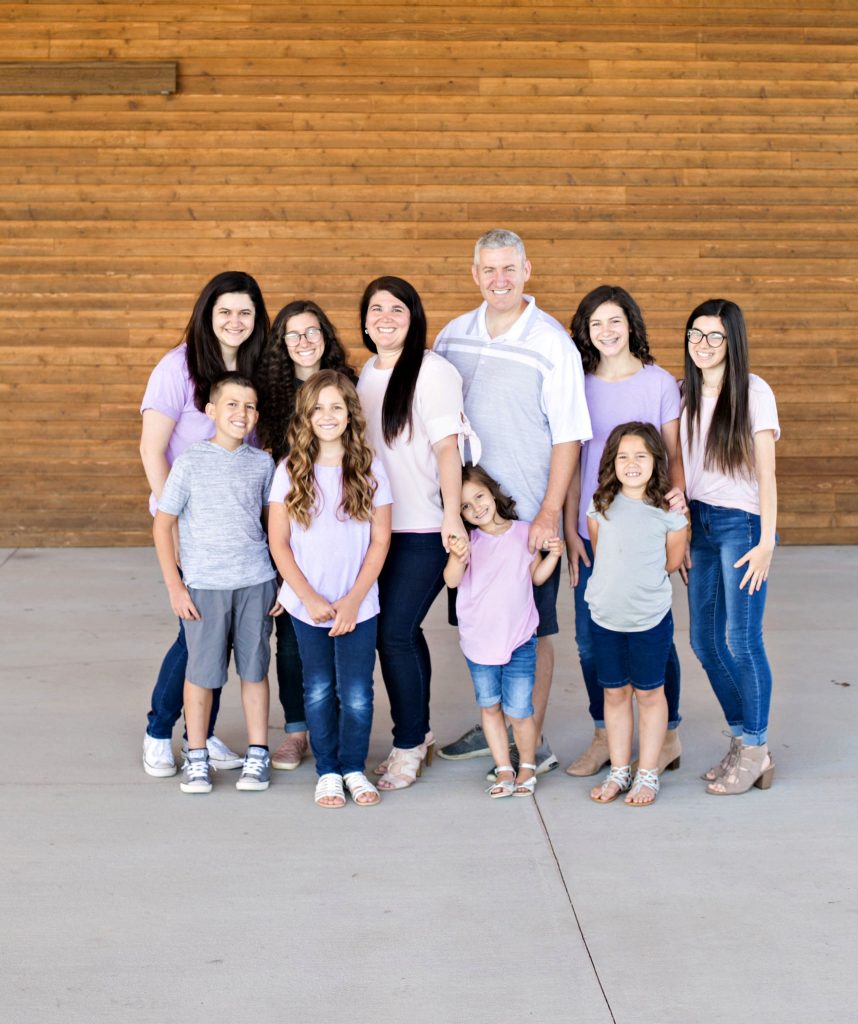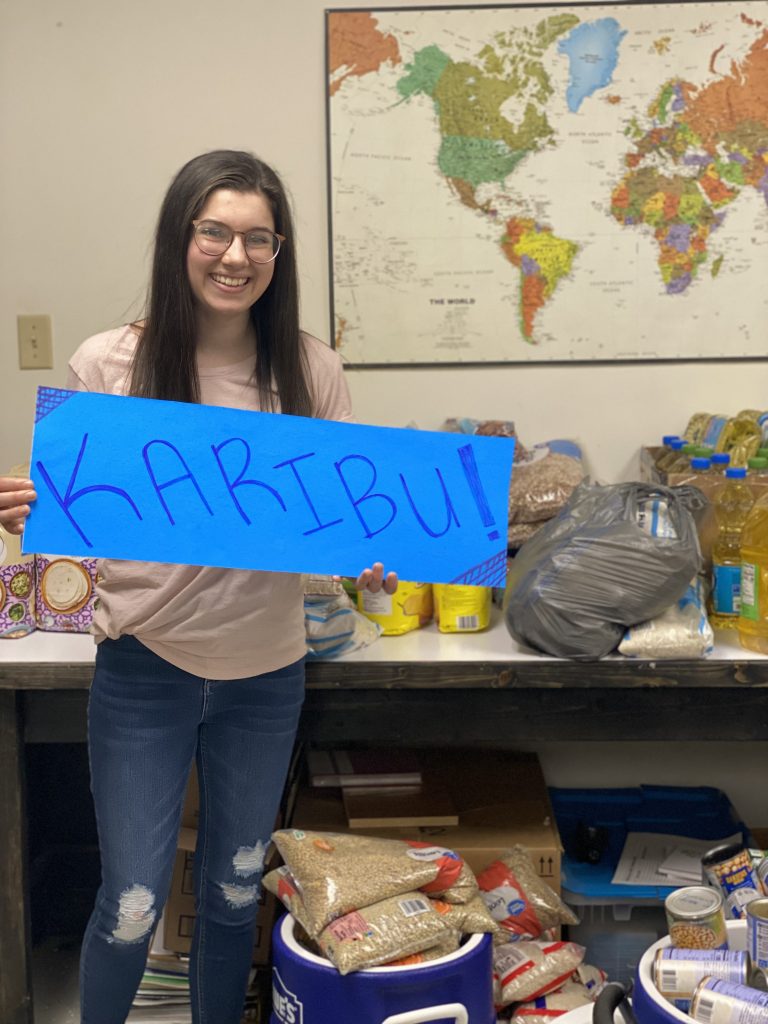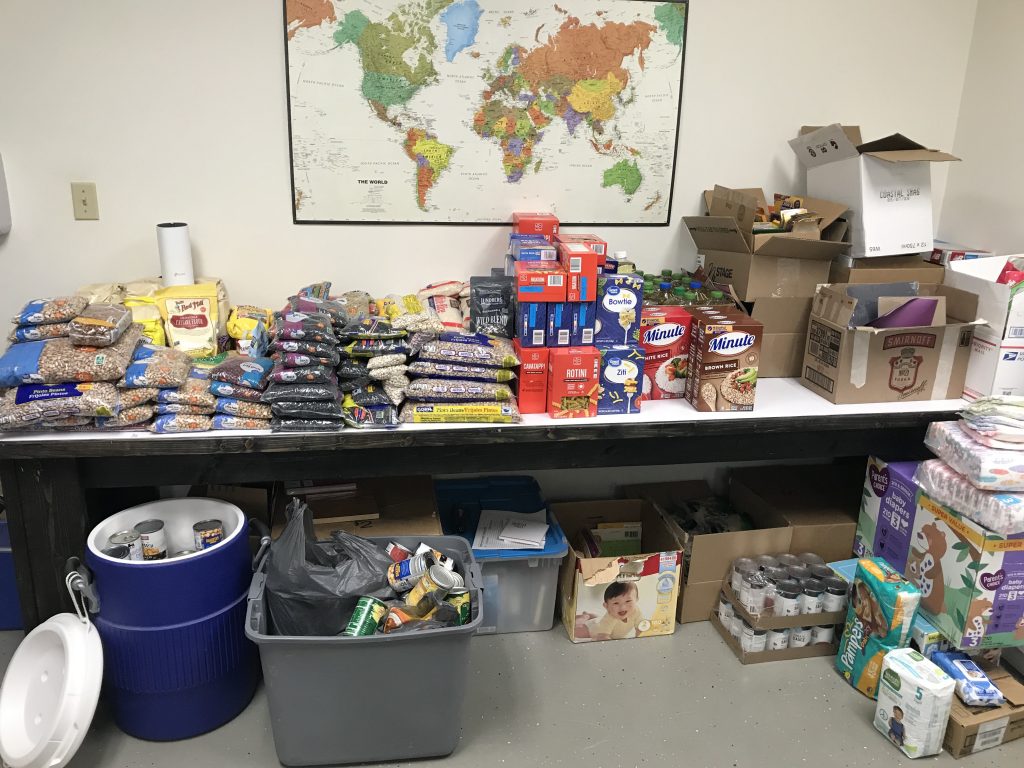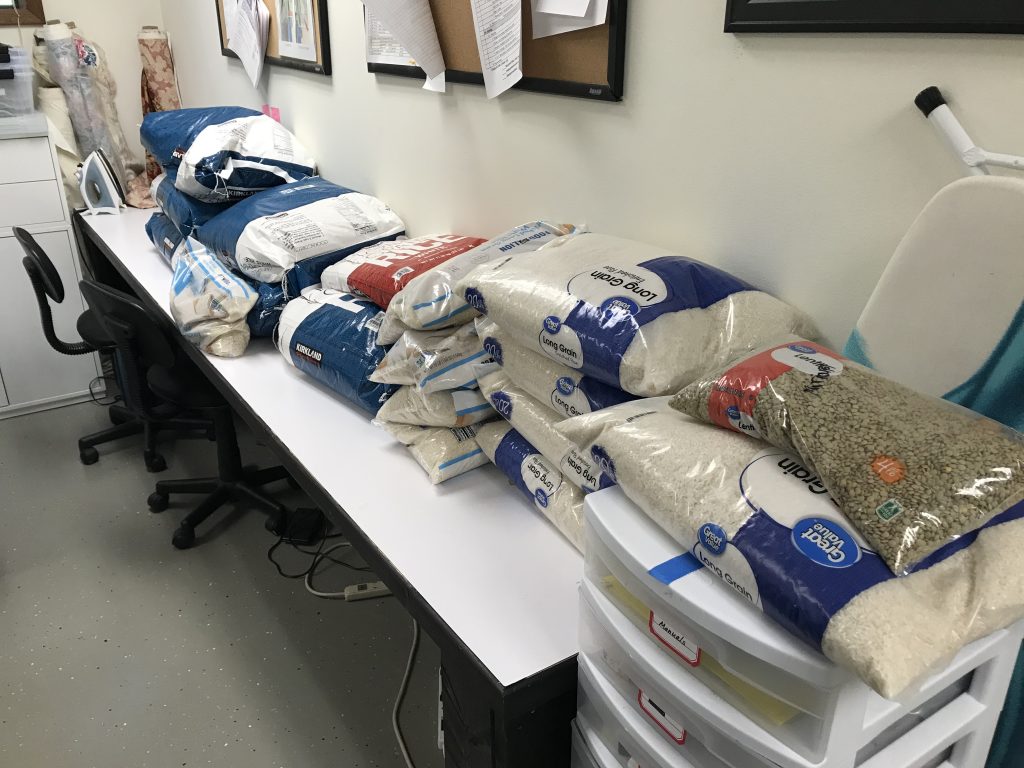Community Partner Highlight: How a High-Schooler Mobilized Her Church to Donate 1,600 Pounds of Food
When assigned a year-long research project for her senior year of high school, Kamree Anderson knew exactly what topic to choose. What she didn’t know is that she would use this project to inspire long-term change.
Where It All Began
Senior Kamree knew for the subject of her final, ~15-page paper, she would have to choose a subject that was relevant to her community and involved her passions. “I’m super passionate about dietetics, nutrition, and generally how food works within the body,” Kamree says. “I knew the topic had to be on an issue in the community, though. I’d need to find a population in the area that this topic applies to.” With some further preliminary research, Kamree came to learn that the crisis level of malnutrition in refugees internationally stays high. She began to reach out to organizations locally that worked with refugees at that point.
The challenge lay in finding other organizations that are able to take food donations. It was her mom, Starr Anderson, who had recently worked with World Relief Triad, that suggested they call to find out if organizing a food drive to donate to the office would be possible. “I had contacted World Relief in the fall to find out what needs we could assist with,” Starr says. “ I put together a group of families from our congregation that could help with organizing the warehouse one Saturday in January of this year. At the same time, Kamree was working on her senior project.”
Kamree knew that the items would need to be specific in order to meet the needs of different diets based on culture, nationality, and religion, so after receiving a list from the office, she got to work.
Engaging the Community
From there, it was up to the high schooler to create excitement, involvement, and engagement. She decided to mobilize the congregation of her church, The Church of Jesus Christ of Latter Day Saints, in a church-wide food drive. She specifically chose to focus on her peers in her youth group.
“As part of the drive at my church, I made it a competition between different ages in the group to create excitement,” Kamree says. “Whoever brought the most food got to pie some of their friends in the face.” Her parents laugh at the “prize” for this project. They’re also quick to point out the impact of the illustration that their daughter used to also educate her peers through. This activity served as a way to visually represent the privilege that the U.S. possesses.
“I think in the U.S., we don’t always realize how blessed we are with resources,” Kamree says. By taping off certain-sized squares on the ground of where her youth group gathers, she showed the vast difference of square footage per household in other countries. “I was inspired to do the activity by a former teacher in middle school who did something similar. I remembered how much it impacted me.” After dividing the students up into each square based on room per capita, she also gave out a certain amount of cookies to each country to represent the amount of food that each country receives to really demonstrate the crisis.
When asked what was the largest takeaway from the process, Kamree speaks on the impact of being able to share her research with peers as a point of interest. “Personally, I knew a lot about dietetics before. But going through this project and specifically researching how it affects refugees and explaining it to my peers sparked a lot of interest in me,” she says.
“I want to keep helping people learn about it. Now, I also want to work in a refugee crisis center or something similar when I’m older.”
Setting an Example Across Generations

Her parents are still amazed by her leadership. “She ran this through our entire congregation and even into our neighborhood,” her mom says. “We’ve received continual comments about how amazing it is that Kamree is the one spearheading this effort. We’re grateful that she got the opportunity to do this.” Her father, Robb, is excited by the potential that he thinks younger people show. “We can’t underestimate them and what they can do,” he says.
Their church congregation is already asking if this is going to be an ongoing yearly effort. Kamree encourages them and the rest of her community, including her younger siblings who wanted to help, to remember that every little bit counts. When reflecting upon the response of her church, she states that “that’s how it’s supposed to be.” She knows that when we come together and ask partnering agencies and nonprofits what we can do instead of waiting, real change can occur.



